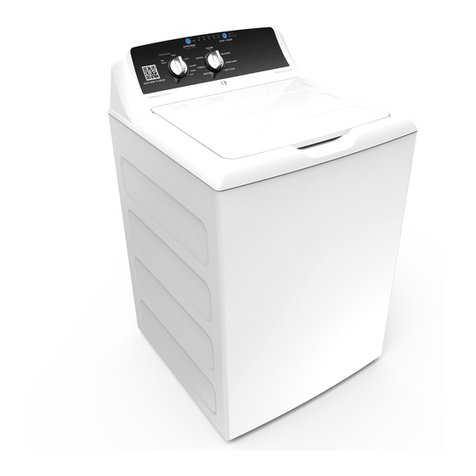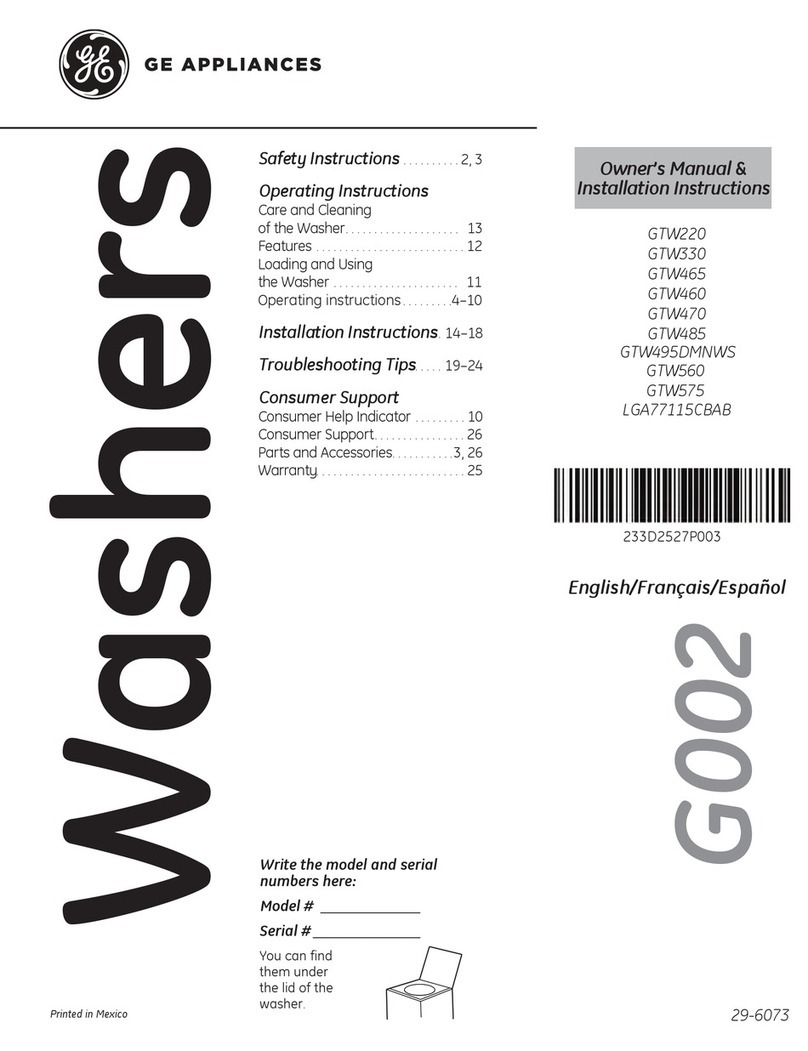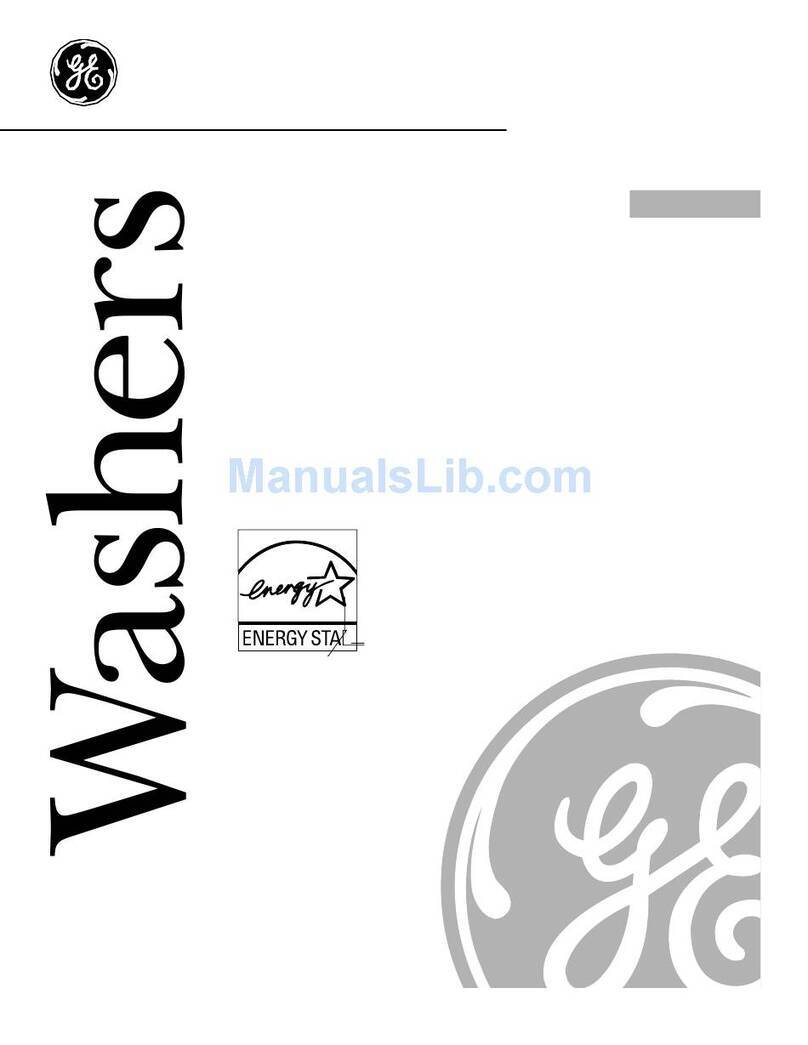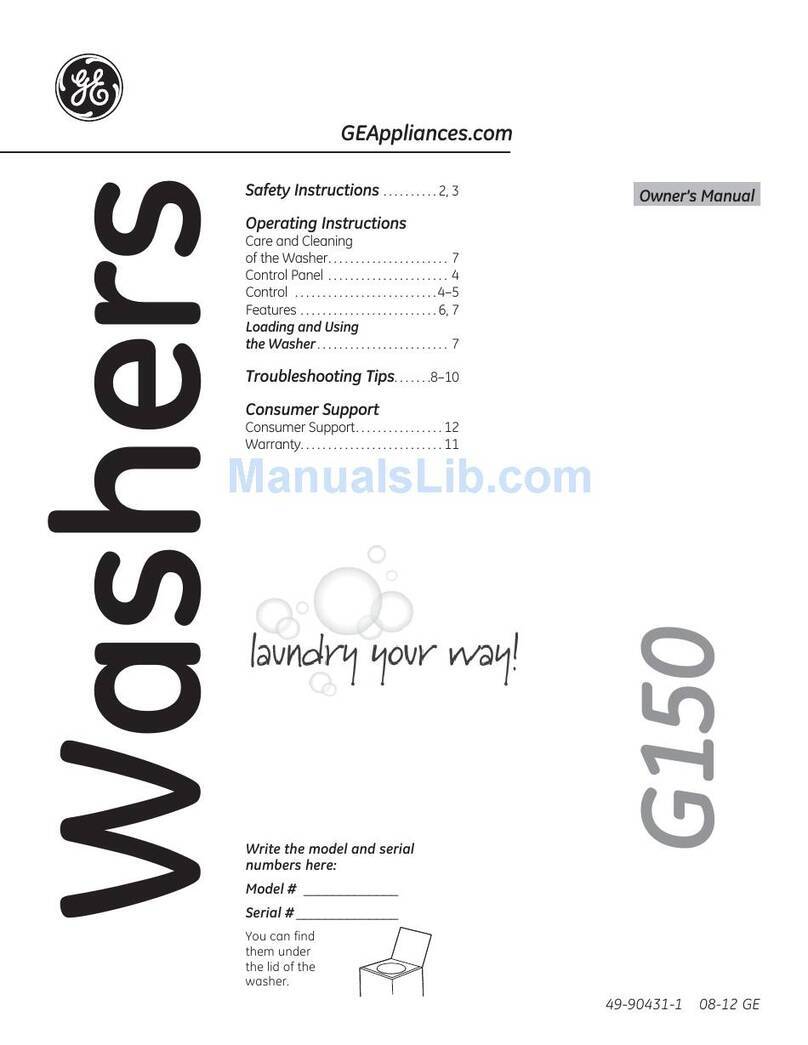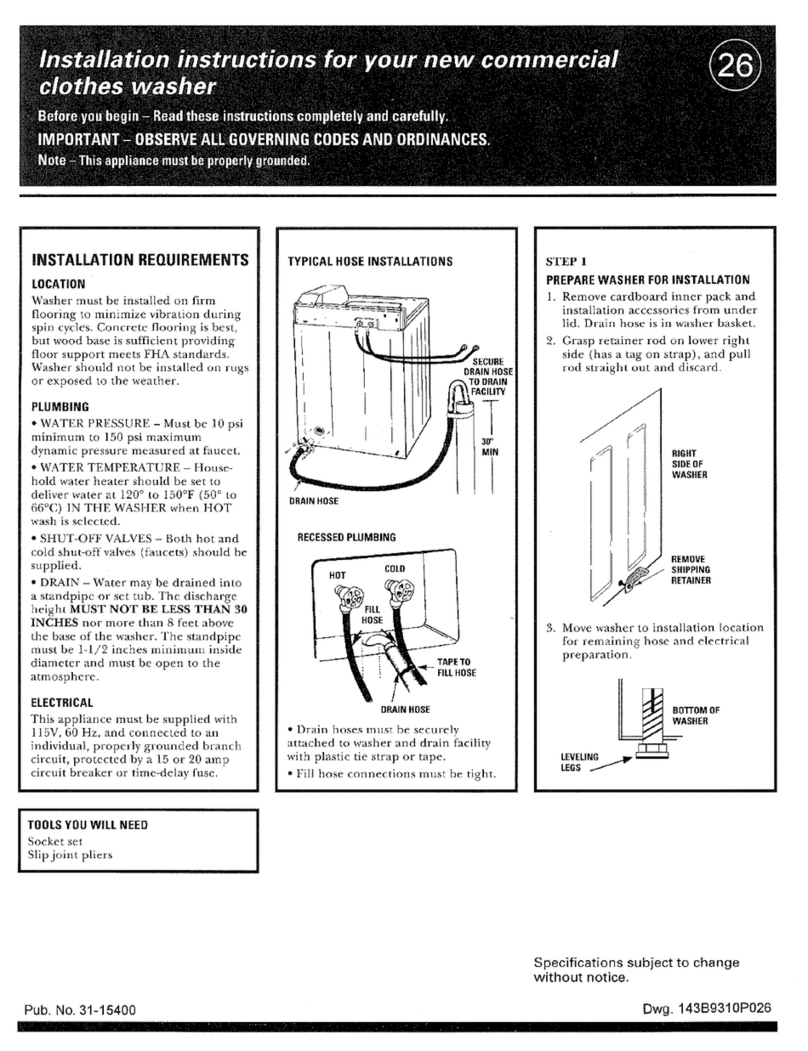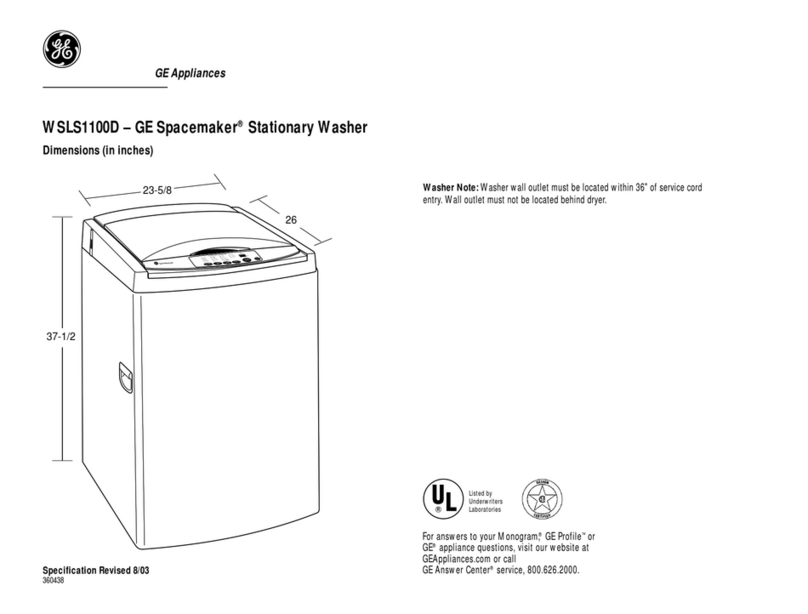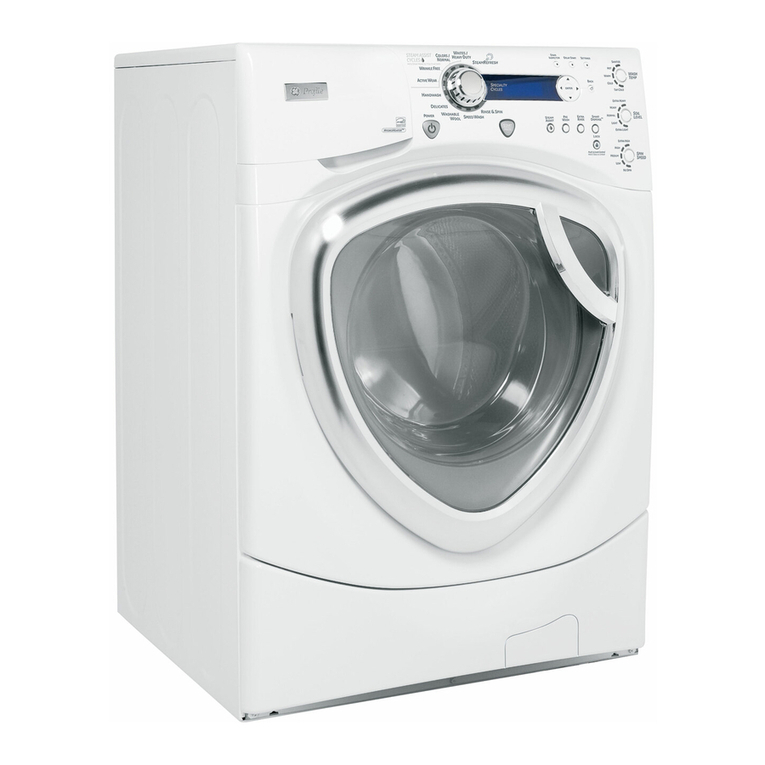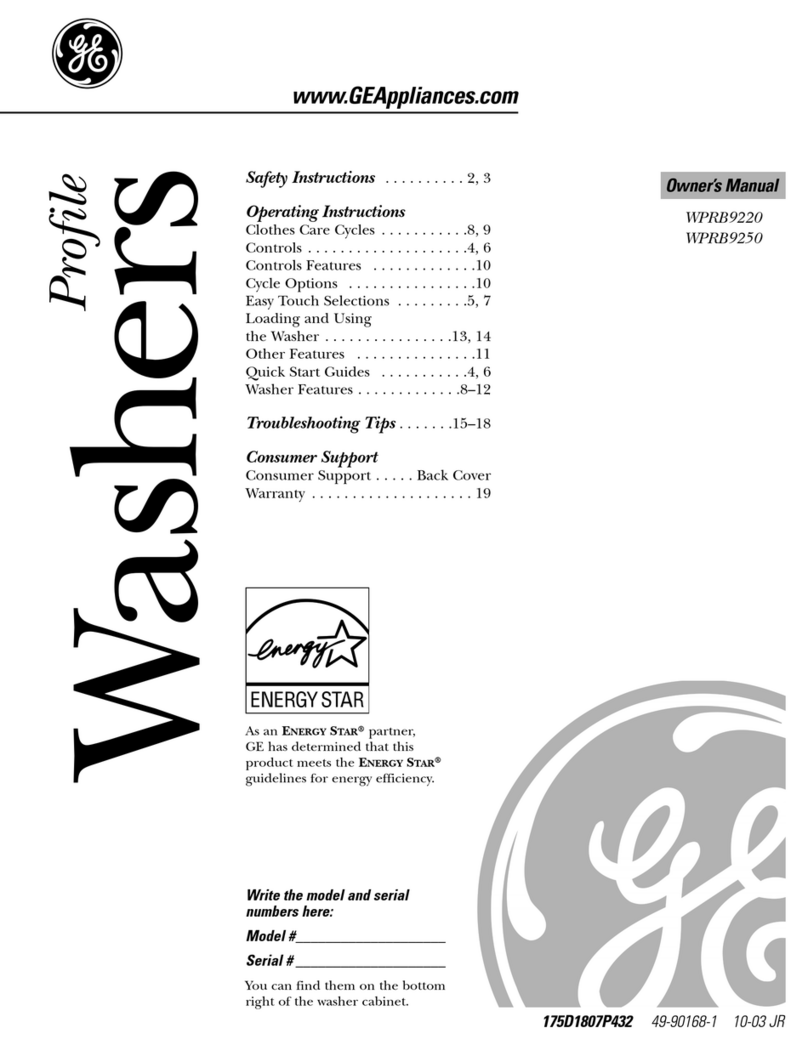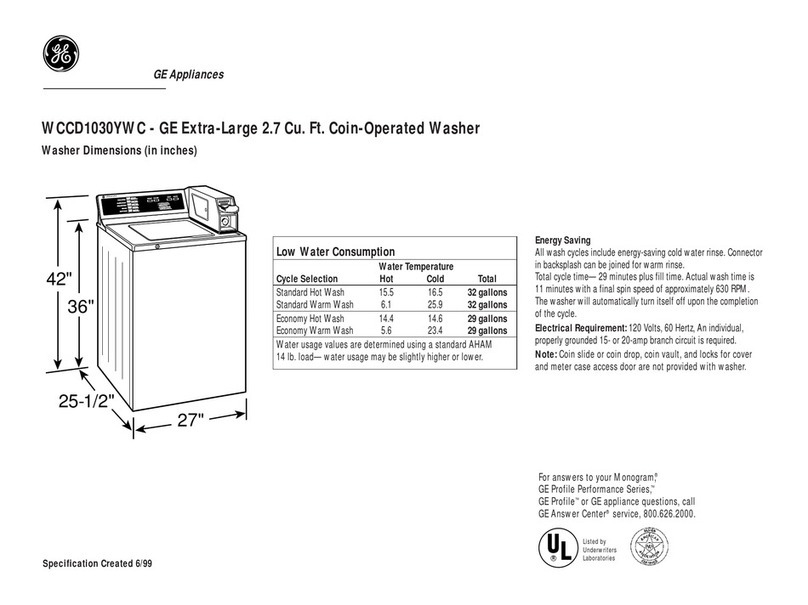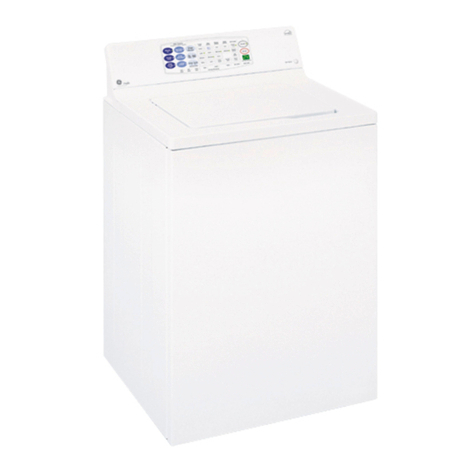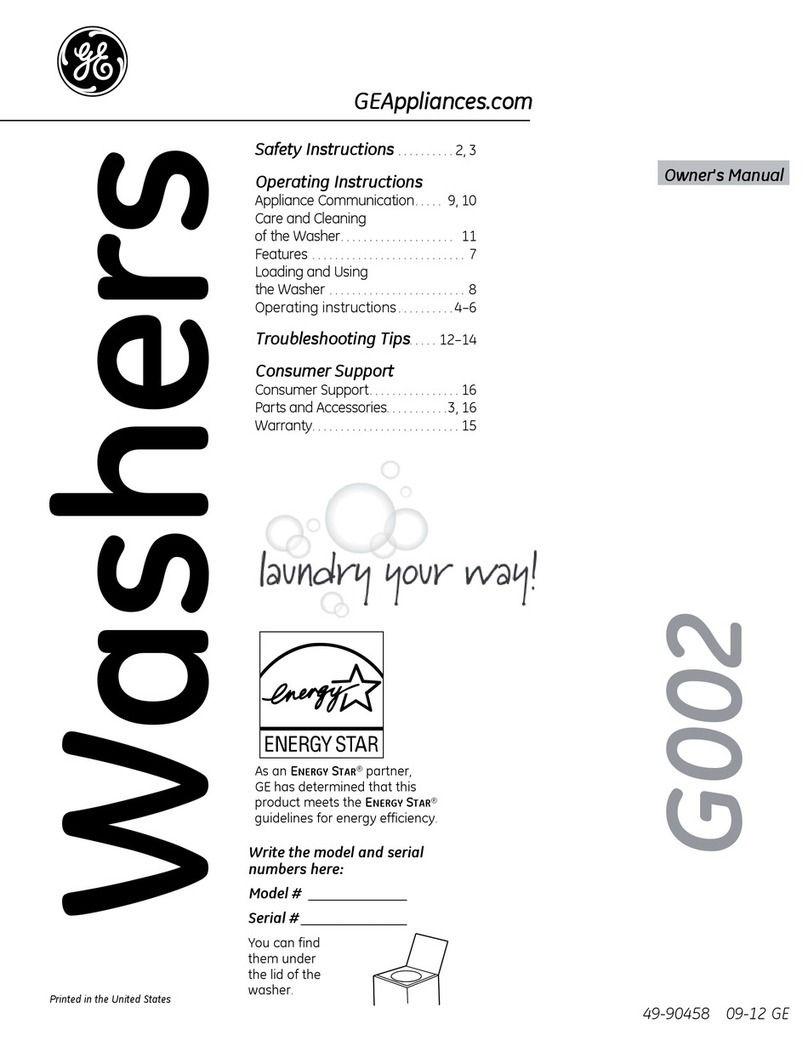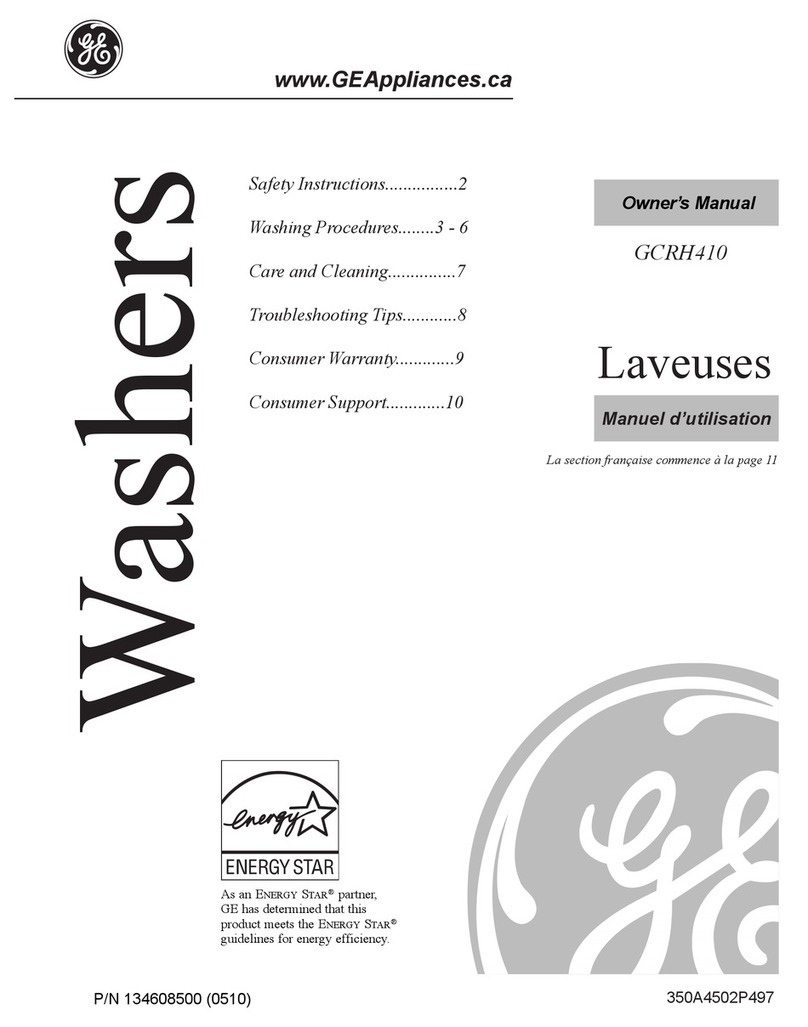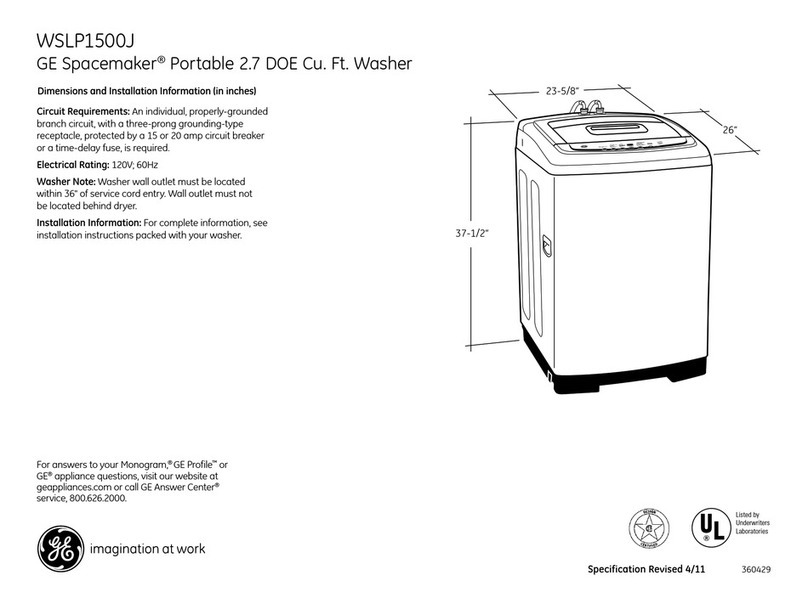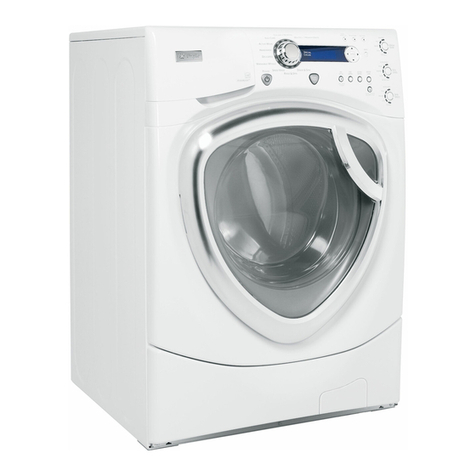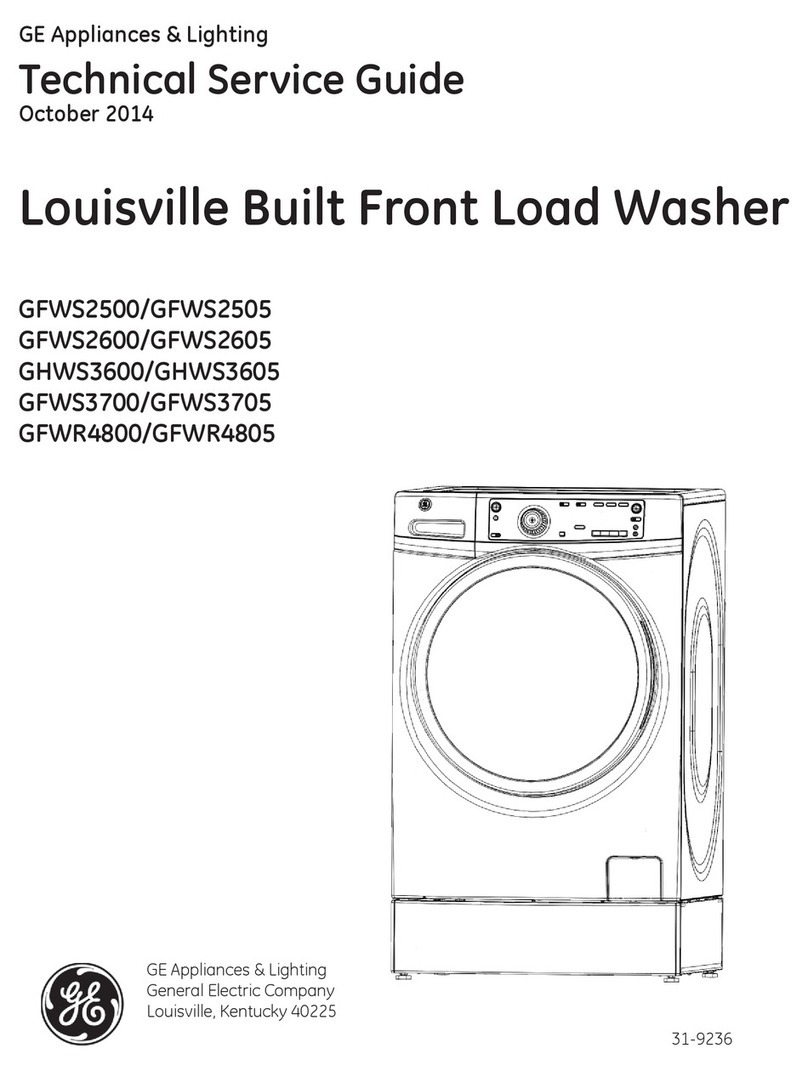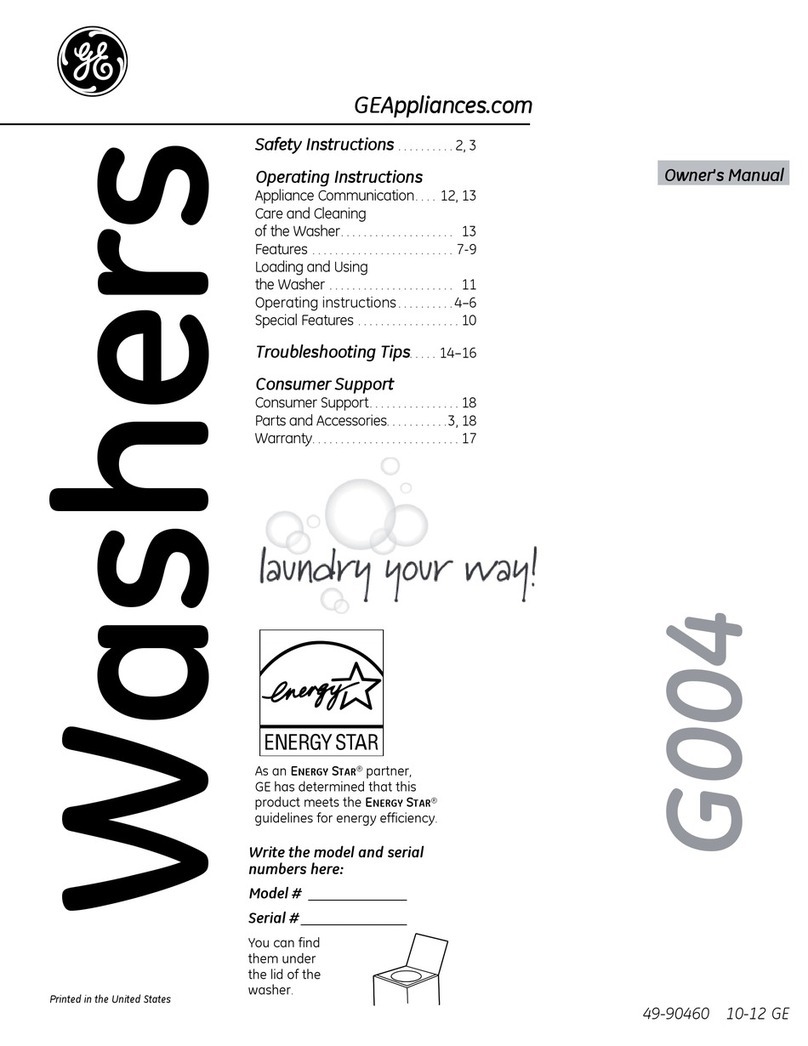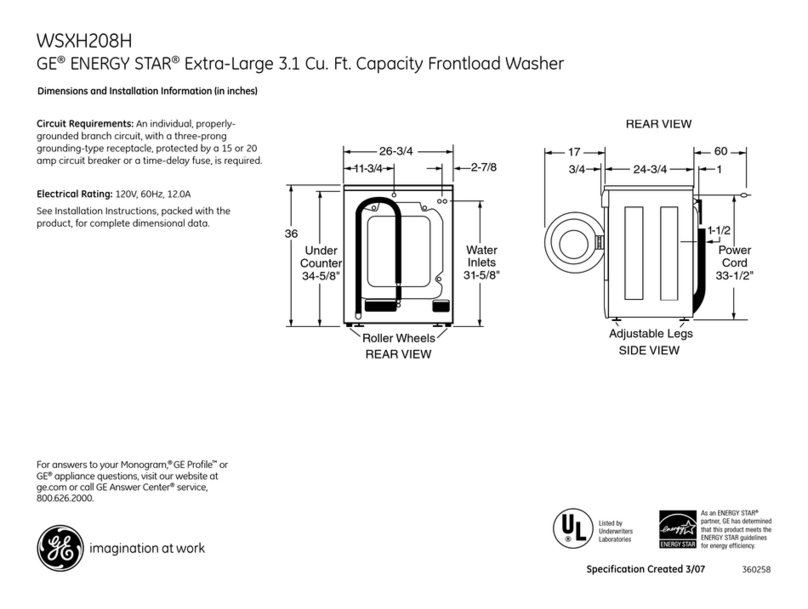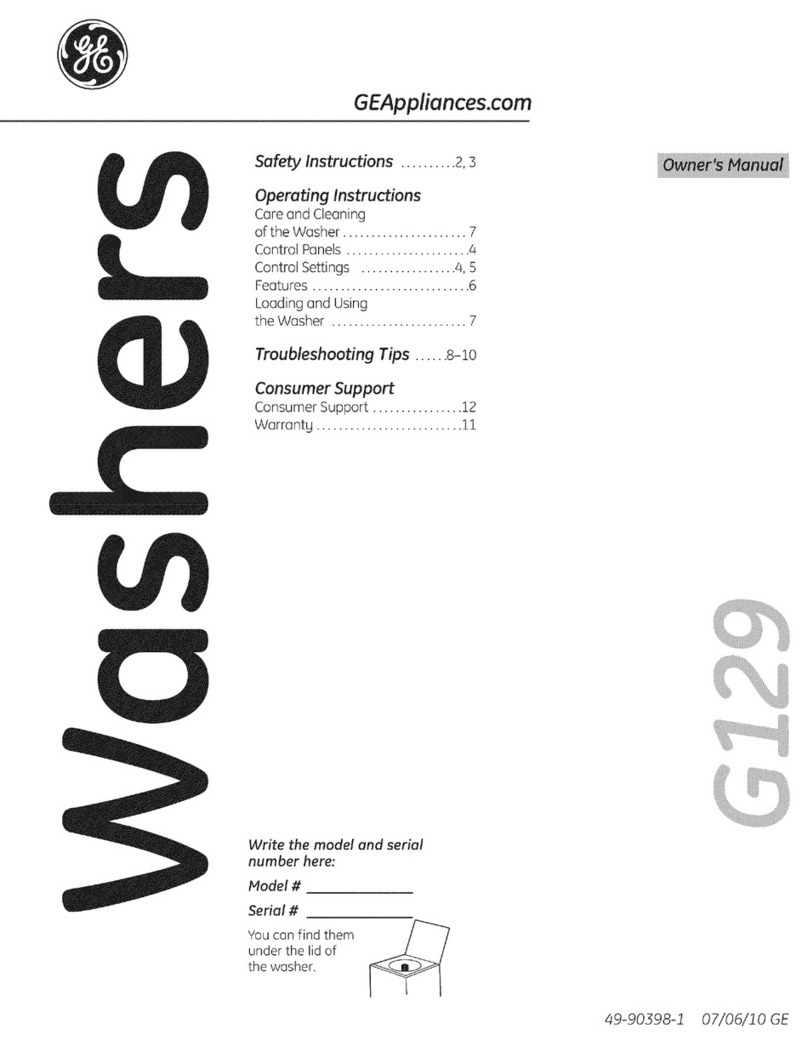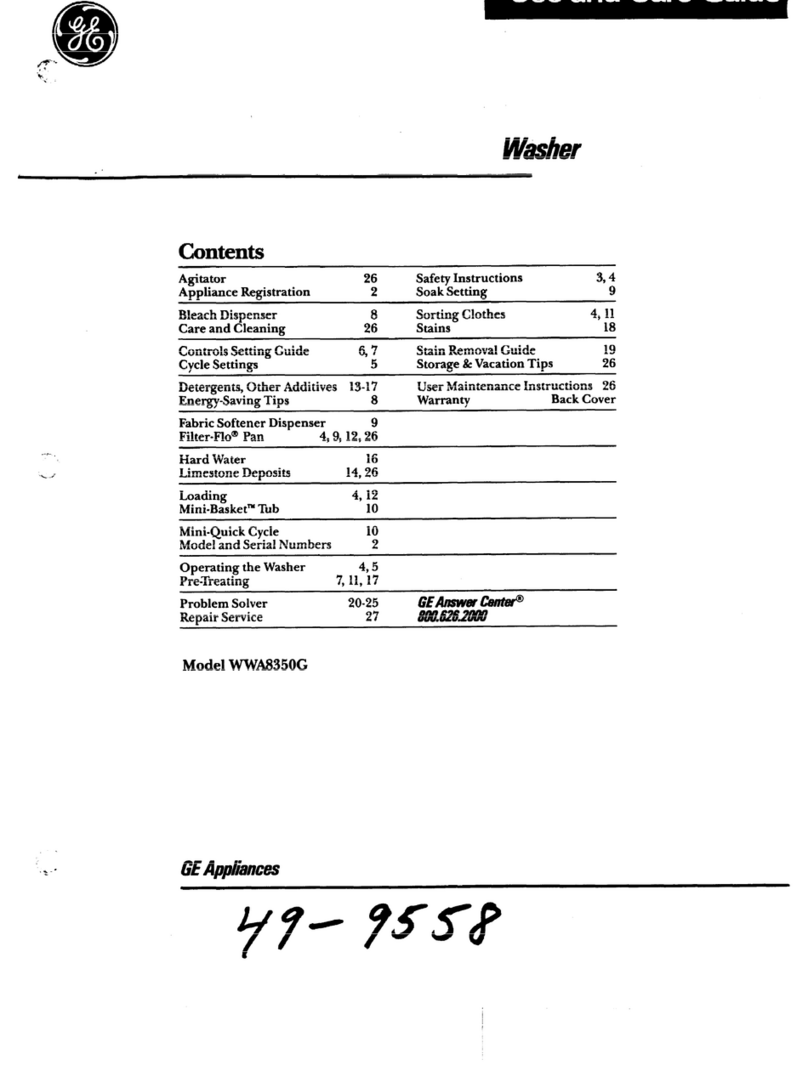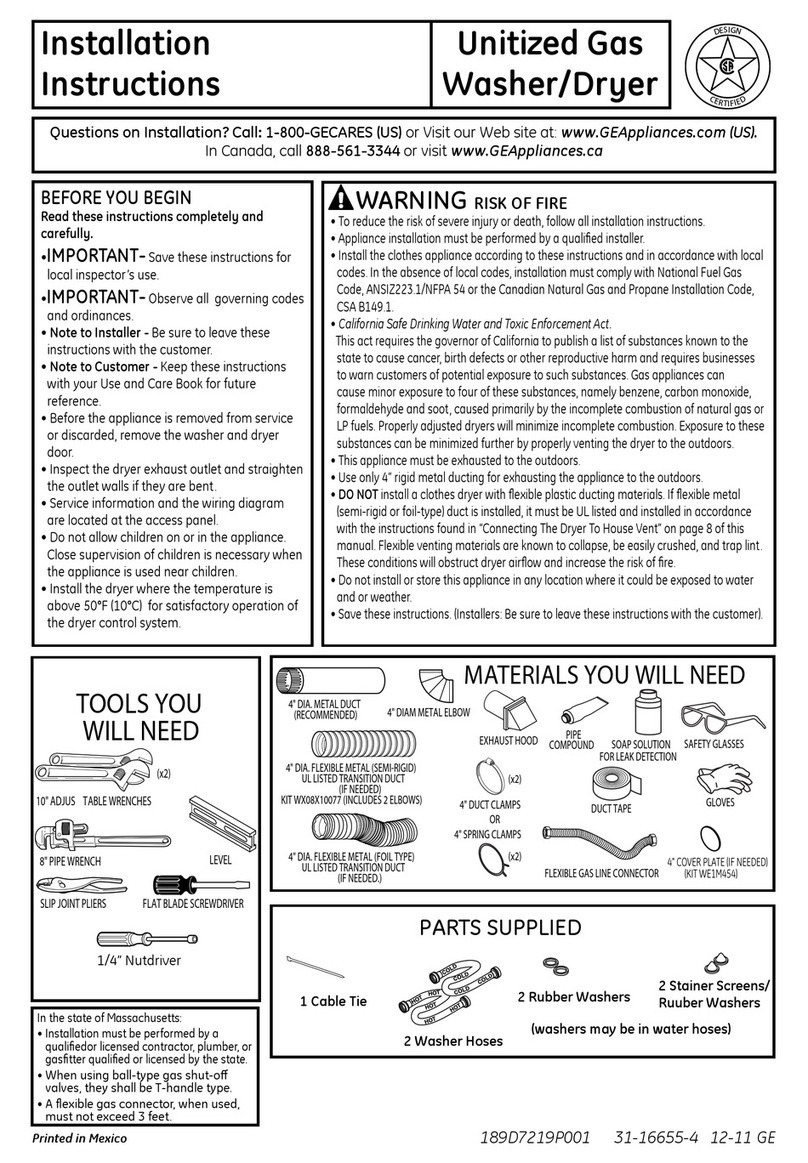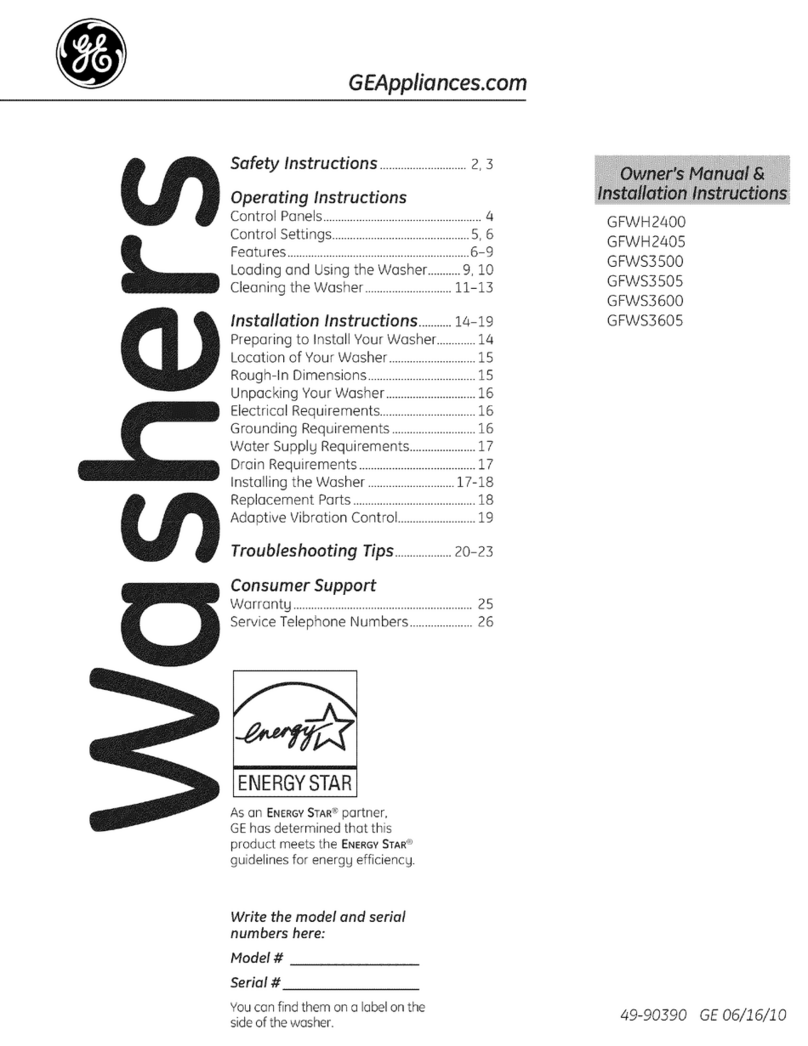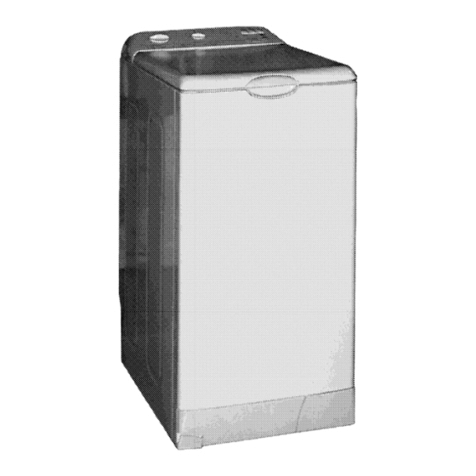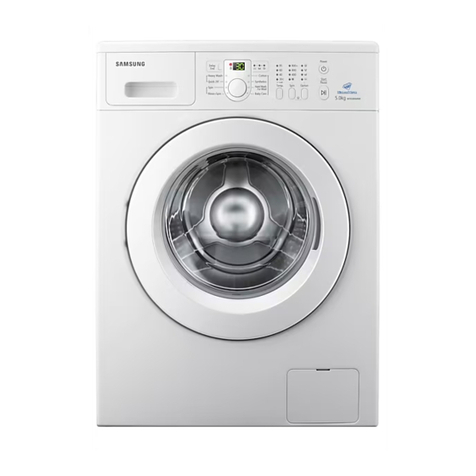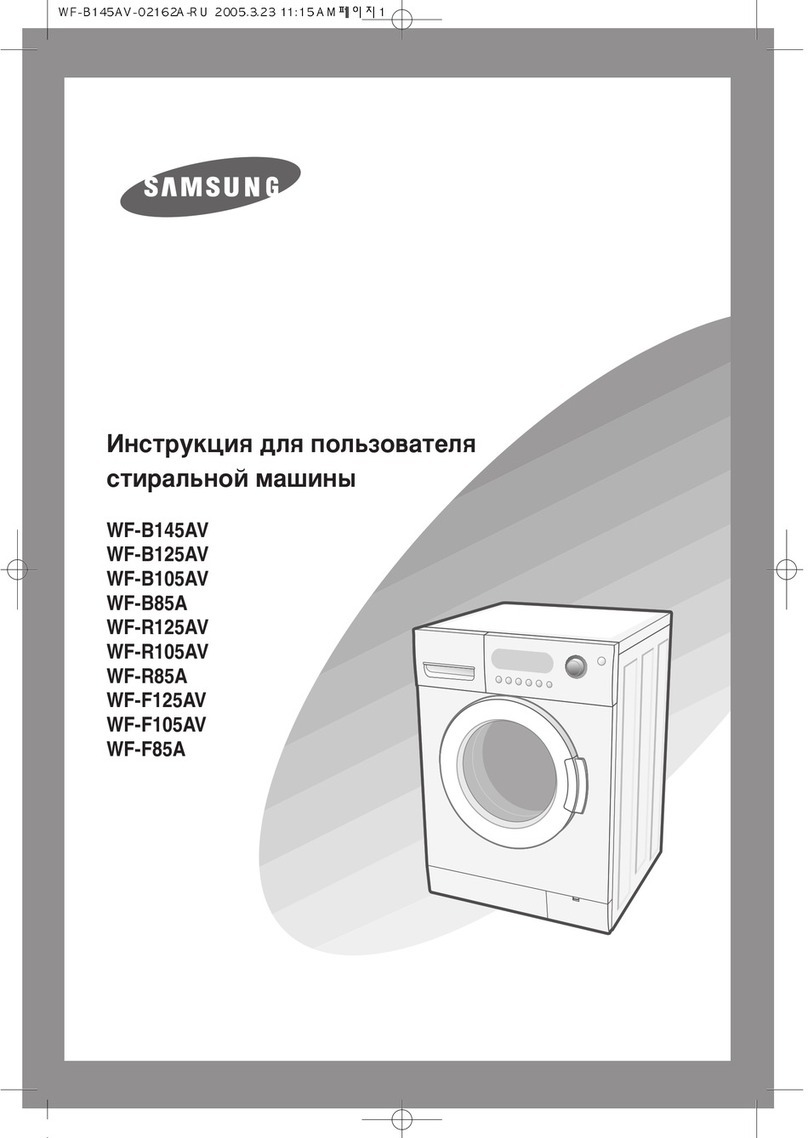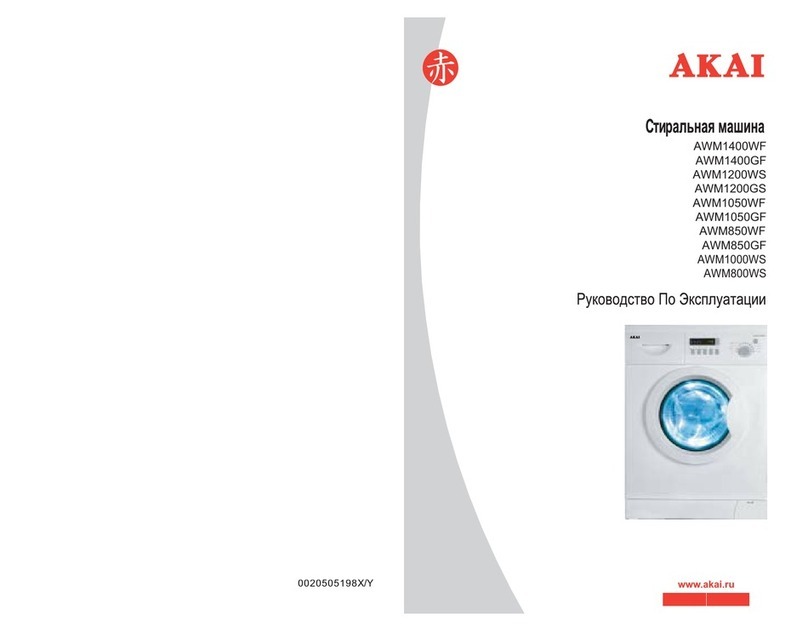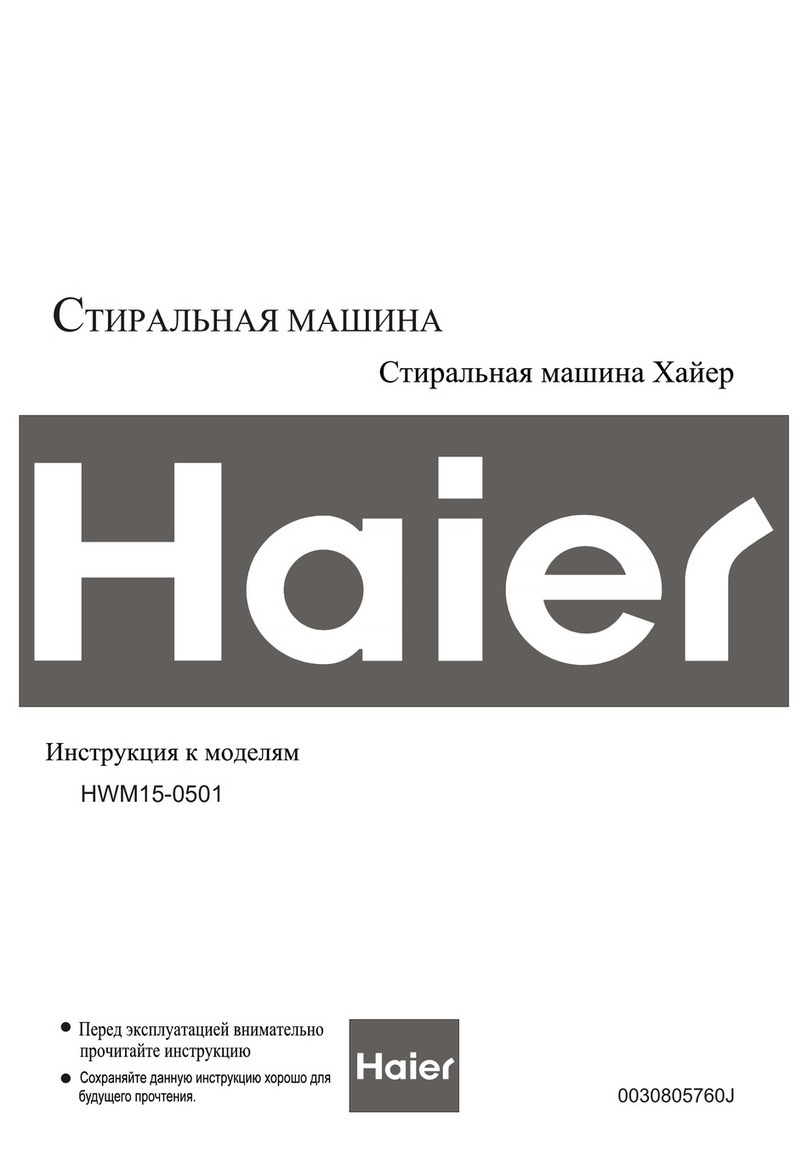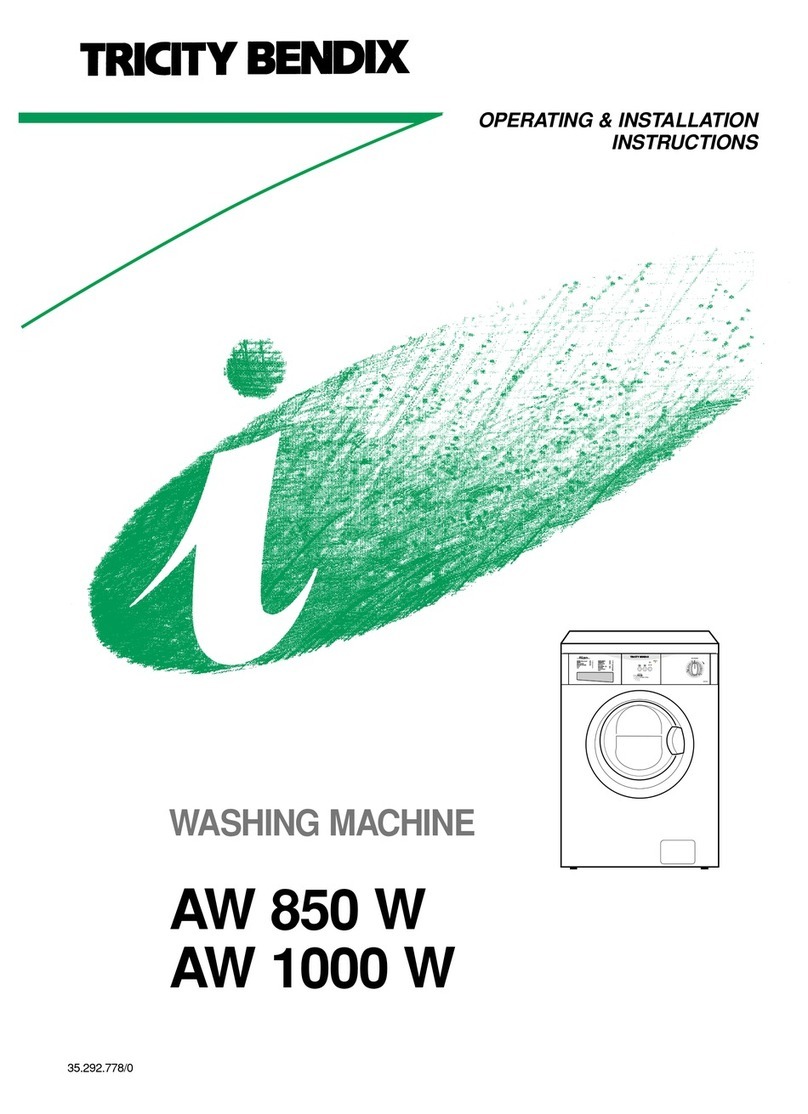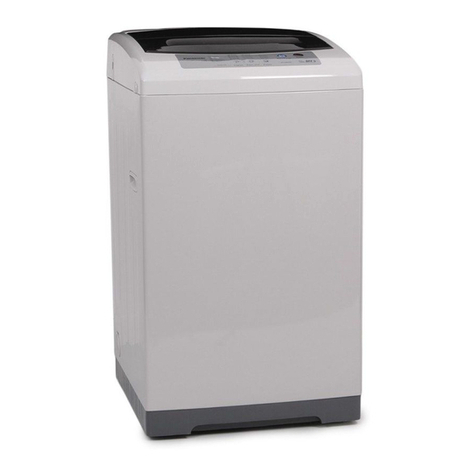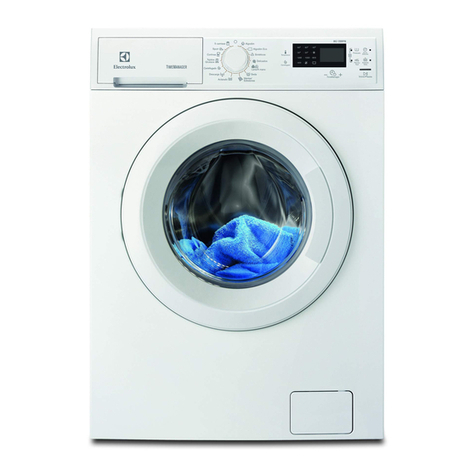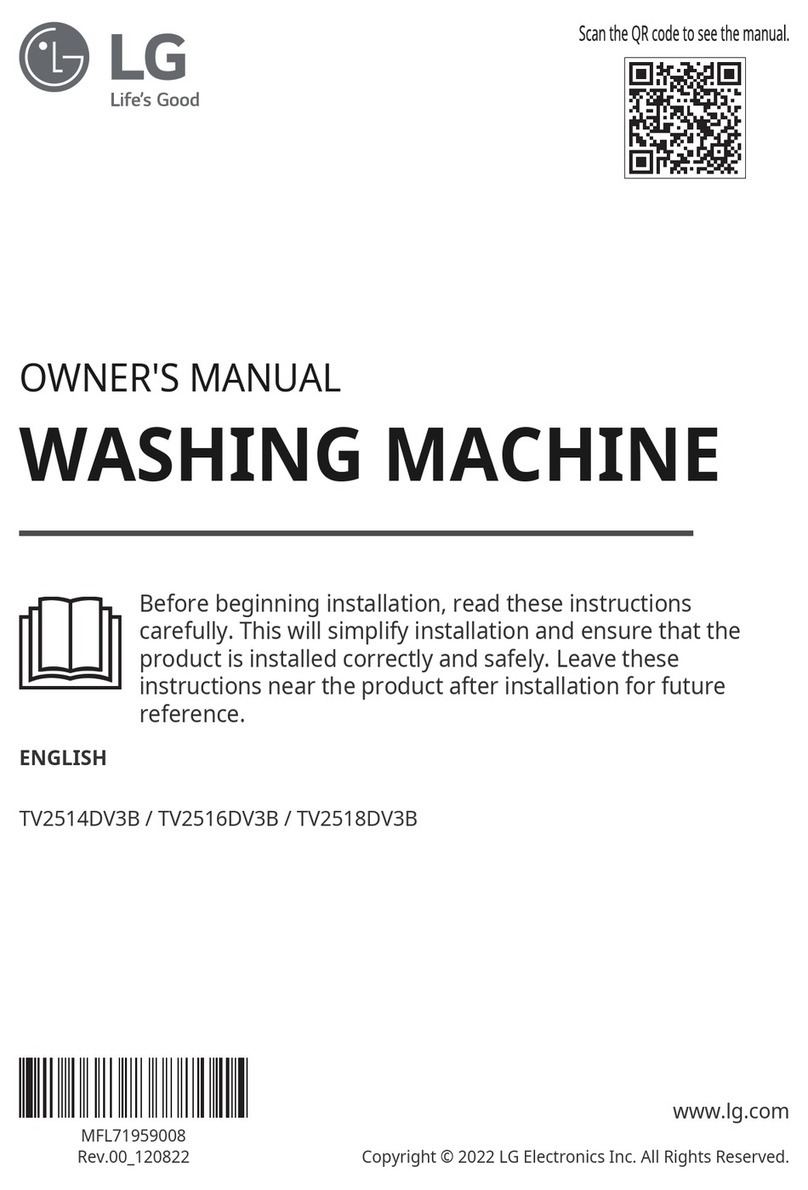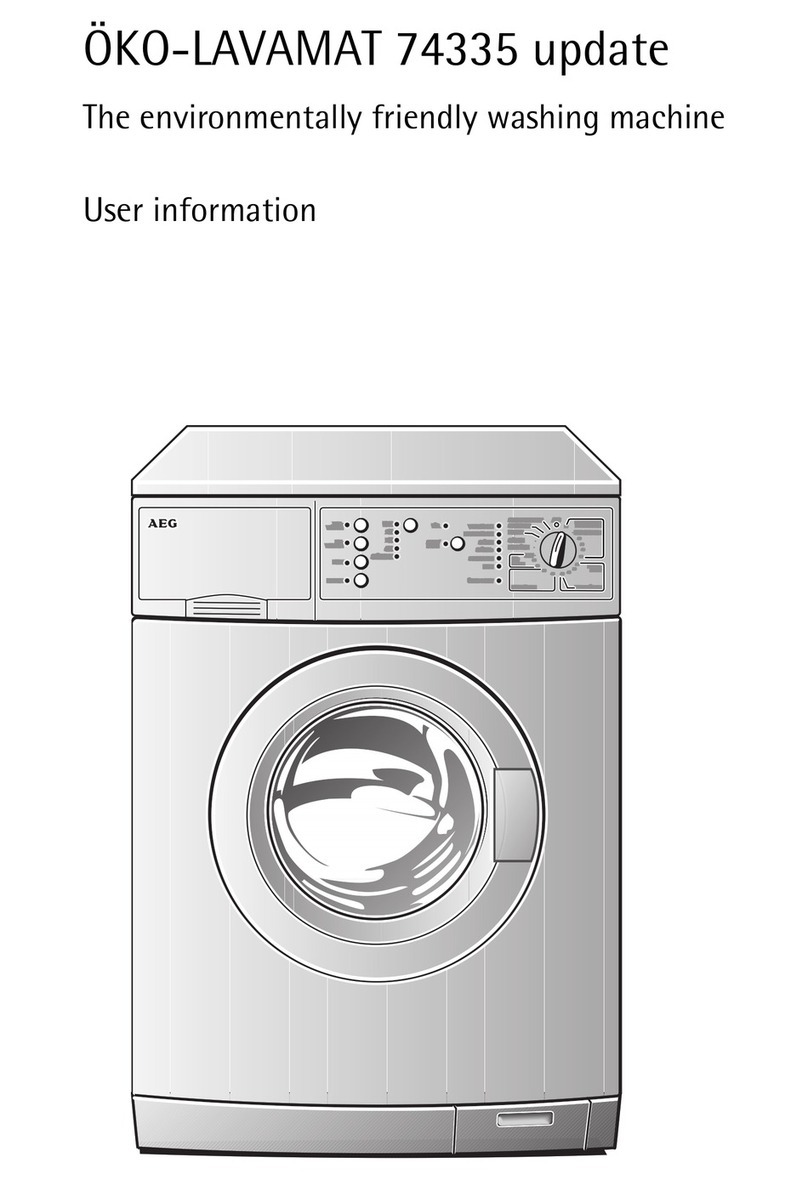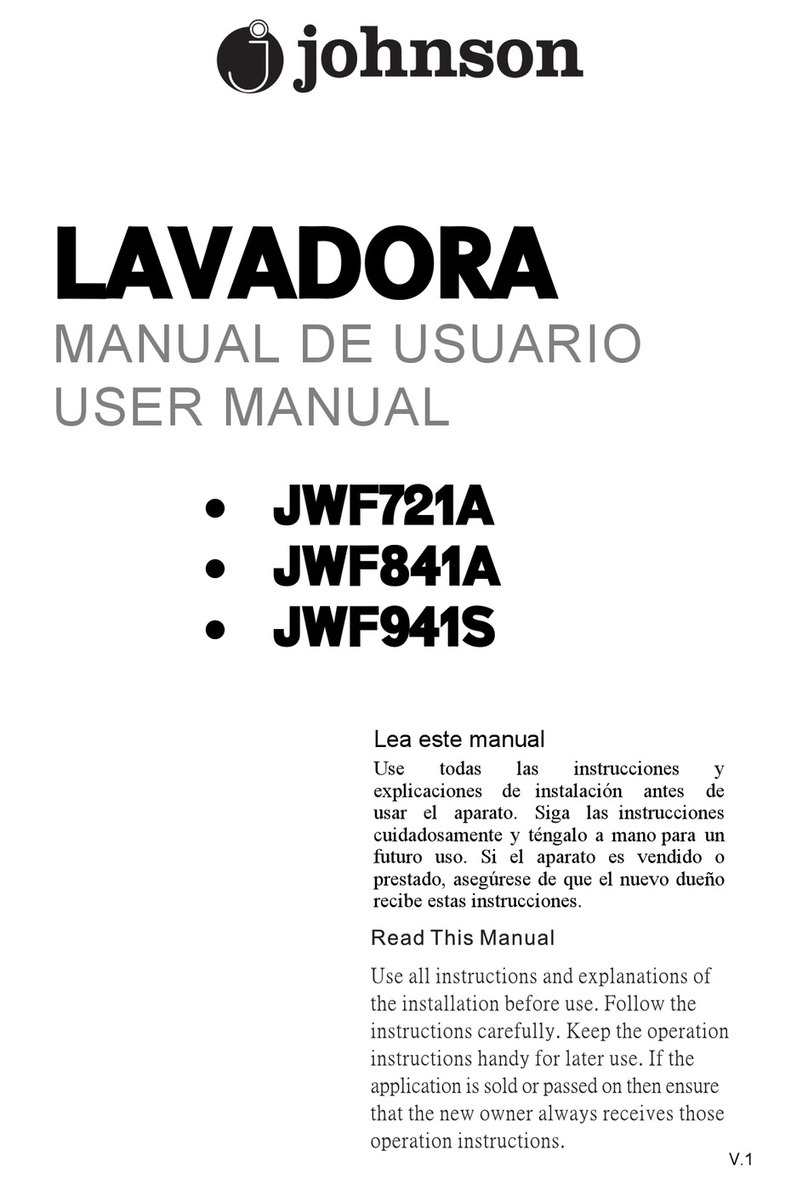IMPORTANT SAFETY INSTRUCTIONS
Read all instructions before using this appliance. .
.
W-G–TO reducetheriskof
fire,electricshock,orinjuryto
personswhenusingyourappliance,
followbasicprecautions,including
thefollowing:
.Usetm applianceonlyforits
intendedpurposeasdescribedin
thisUseandCareBook.
cThiswashermustbeproperly
installedandlocatedinaccordance
withtheInstallationInstructions
beforeitisused.Ifyoudidnot
receiveanInstallationInstructions
sheetwithyourwasher,youcan
obtainonebycontactingtheservice
locationnearestyou.
–Properly groundtoconformwith
allgoverningcodesandordinances.
FollowdetailsinInstallation
Instructions.
–Install orstorewhereitwillnot
beexposedtotemperaturesbelow
freezingorexposedtotheweather.
–Connect toaproperlyrated,
protectedandsizedpowersupply
circuittoavoidelectricaloverload.
–Connect toadequateplumbing
anddrainfacilitiesasdescribedin
theInstallationInstructions.
.Tumoffwaterfaucetswhen
thewasherisnotinusetorelieve
pressureonhosesandvalves,andto
minimizeleakageifahoseorvalve
shouldbreakorrupture.
●men disconnectingthis
appliancepullbytheplugrather
thanthecordtoavoiddamagetothe
cordorjunctionofcordandplug.
Makesurethatthecordislocatedso
thatitwillnotbesteppedon,tripped
overorotherwisesubjectedto
damageorstress.
cDonotrepairorreplaceanypart
oftheapplianceorattemptany
servicingunlessspecifically
recommendedinthisUseandCare
Bookorinpublisheduser-repair
instructionsthatyouunderstandands
havetheskillstocarryout.
Tbminimizethe possibility
of iqjury: .
●DOnotWc~ofie bleachwith
ammoniaoracidssuchasvinegar
and/orrustremover.Mixingcan
produceatoxicgaswhichmay
causedeath.
●Donotwashordryarticles
thathavebeencleanedin, washed
in, soakedin, orspottedwith
combustibleorexplosivesubstances
(suchasgasoline,degreasers,
dry-cleaningsolvents,kerosene,
etc.)whichmaygiveoffvaporsthat
couldigniteorexplode.
Donotaddthesesubstancestothe
washwater,anddonotusethese
substancesaroundyourwasher
and/ordryerduringoperation.
.HYDROGENGASisproduced
bythechemicalactionwithinyour
waterheaterandthegascan
accumulateinthewaterheater
and/orwaterpipesifhotwaterhas
notbeenusedforaperiodoftwo
weeksorlonger.HYDROGENGAS
CANBEEXPLOSIVEUNDER
THESECIRCUMSTANCES.Soto
preventthepossibilityofdarnageor
injury,ifyouhavenotusedhot
waterfortwoweeksormore,or
moveintoaresidenceinwhichthe
hotwatersystemmaynothavebeen
usedforsometime,turnonallhot
waterfaucetsandallowthemtorun
forseveralminutesbeforeusingany
electricalappliancewhichis
comectedtothehotwatersystem.
Thiswillallowanyhydrogengasto
escape.Sincethegasisflammable,
donotsmokeoruseanopenflame
orapplianceduringthisprocess.
.Neverreach ~to -her w~e it
ismoving.Beforeloading,unloading
oraddingclothes,pushintheCycle
Selectorknobto “SIUP” position,
thenwaituntilthemachinehas
completelystoppedbeforeopening
thelid.
.
●Closesupervisionisnecessary
ifthis applianceisusedbyornear
children.Donotallowchildrento
playinside,onorwiththisappliance
oranydiscardedappliance.Dispose
ofdiwmiedappliancesandshippingor
packingmaterialsproperly.Before
discardingawasher,orremoving
fkomsefice, removethewasherlid.
●KeepalIlaundryaids(suchas
detergents,bleaches,fhbricsofhmers,
etc.)outofthereachofchildren,
preikmblyinalockedcabinet.Observe
allwarningsoncontainerlabelsto
avoidpersonalinju~.
●Keeptheareaaroundand
underneathyourappliancesfree
fmmtheaccumulationofcombustible
materials,suchaslint, paper,rags,
chemicals,etc.
.Kmp theflooraroundyour
appliancescleananddrytoreduce
thepossibilityofslipping.
●Tominimizethepossibility
ofelectricshock,unplugthis
appliancefromthepowersupply
beforeattemptinganymaintenance
orcleaning(excepttheremovaland
cleaningofthelintfilter).
NCYI’E:‘IbmingtheCycleSelector
knobtoanOFFpositiondoesNOI’
disconnecttheappliancefromthe
powersupply.
●DonottamperwithCOntrOk.
●Donotoperatethisappliance
ifitisdamaged,malfunctioning,
partiallydisassembled,orhas
missingorbrokenparts,includinga
damagedcordorplug.
.Neverclimbonors~d onthe
washertop.
.DO not washfiberglassarticlesin
yourwasher.Skinirritationcould
resultfromtheremainingparticles
thatmaybepickedupbyclothing
duringsubsequentwasheruse.
